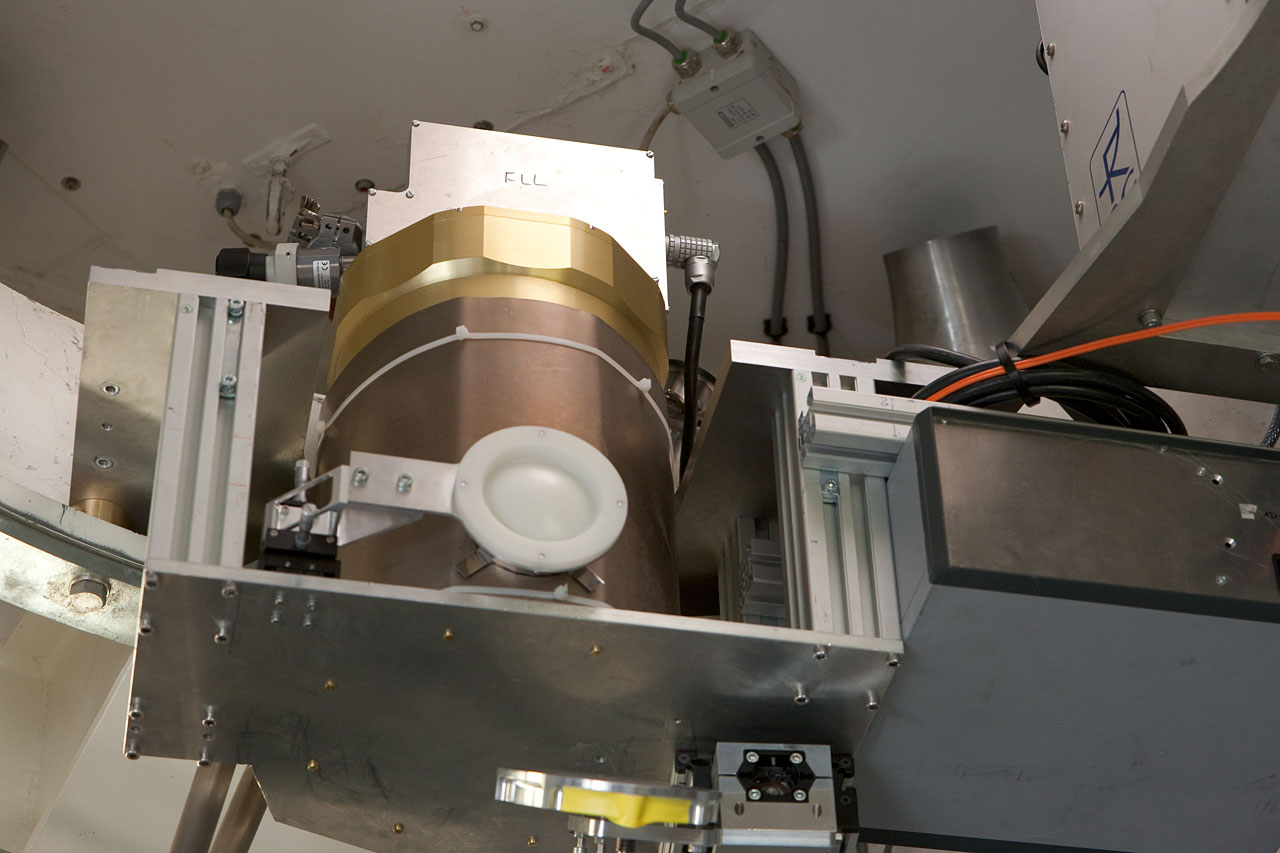The Sub-millimetre APEX Bolometer Camera (SABOCA) consisted of a 39-channel bolometer array operating at 350 micron. It used the Transition edge sensor (TES) technology with SQUID amplification and time-domain multiplexing.
The receiver was designed and integrated by the Max-Planck Institute for Radioastronomy (MPIfR) in collaboration with the Institute for Photonic Technology (IPTH) in Jena, Germany. It was installed in the Cassegrain cabin onboard APEX and commissioned in March 2009.

SABOCA was a facility instrument which could be used to observe a range of objects in different fields of astrophysics. It was decommissioned in 2012 leaving space for the dual colour bolometer camera ArTéMiS.
To know more about the data reduction with SABOCA and the calibration plan, you can check the former SABOCA web pages.
Publications based on data obtained with SABOCA should cite the following reference paper:
The Submillimetre APEX Bolometer Camera, SABOCA
G. Siringo, E. Kreysa, C. De Breuck, A. Kovacs, A. Lundgren, F. Schuller, T. Stanke, A. Weiss, R. Güsten, N. Jethava, T. May, K. M. Menten, H.-G. Meyer, M. Starkloff, V. Zakorasenko, The Messenger, vol 139, p. 20-23.